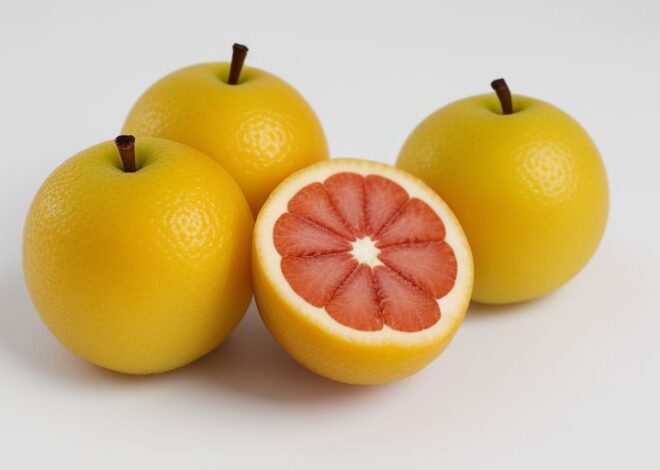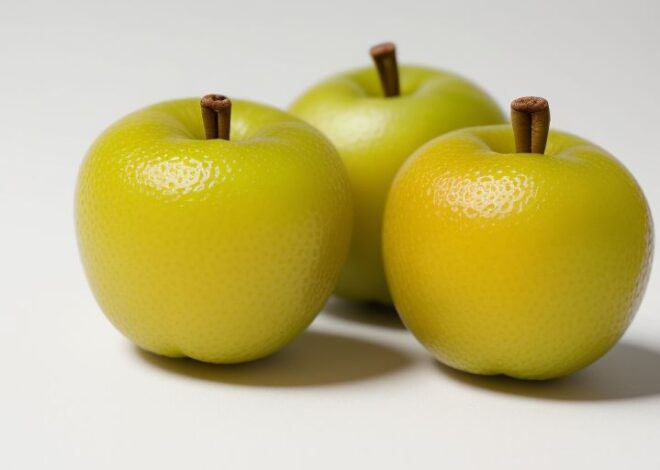
Nectarine
Introduction
Nectarines (Prunus persica var. nectarina) are a type of stone fruit that belongs to the Rosaceae family. They are closely related to peaches, but lack the fuzzy skin, making them a popular choice among fruit enthusiasts. Nectarines are juicy, sweet, and rich in nutrients, making them a great addition to a healthy diet.
Etymology
The name “nectarine” is derived from the Greek word “nekta,” meaning “death,” as the fruit was believed to be a favorite of the gods. The Latin name “persica” refers to the fruit’s origin in Persia (modern-day Iran).
Description
Nectarines are small to medium-sized fruits with a smooth, glossy skin that ranges in color from yellow to red to white. The flesh is juicy and sweet, with a single pit or stone in the center. They are similar to peaches but lack the fuzziness, making them a popular choice for eating fresh or using in cooking and baking.
Taxonomy and Cultivars
Nectarines are a variant of peaches (Prunus persica) and are classified as a separate variety (var. nectarina). There are several cultivars of nectarines, including:
| Cultivar | Description |
|---|---|
| ‘Arctic Star’ | White flesh, sweet and juicy |
| ‘Fantasia’ | Yellow flesh, sweet and tangy |
| ‘Sunred’ | Red flesh, sweet and juicy |
Distribution and Habitat
Nectarines are native to the Middle East and South Asia but are now cultivated in many parts of the world, including the United States, Europe, and Australia. They prefer a warm and temperate climate with well-drained soil.
Cultivation
Nectarines are typically grown in orchards, where they are pruned annually to maintain a central leader system. They are self-fertile but benefit from cross-pollination. Regular watering and fertilization are necessary for optimal growth and fruit production.
Production and Uses
Nectarines are widely cultivated for fresh consumption, canning, and drying. They are also used in baking, cooking, and making jams and preserves.
Phytochemistry
Nectarines contain a range of phytochemicals, including:
| Phytochemical | Description |
|---|---|
| Vitamin C | Antioxidant and immune system booster |
| Potassium | Essential for heart health and blood pressure regulation |
| Fiber | Supports digestive health and satiety |
Flavor
Nectarines are known for their sweet and juicy flavor, with a hint of tartness. The flavor profile can vary depending on the cultivar and ripeness.
Toxicity
Nectarines are generally safe to eat, but the pit or stone in the center contains a compound called amygdalin, which can release cyanide when ingested. However, the amount of cyanide is unlikely to cause harm.
Nutrition
Nectarines are a nutrient-rich fruit, providing:
| Nutrient | Amount (per 100g) |
|---|---|
| Energy | 44 kcal |
| Carbohydrates | 10.5g |
| Fiber | 2.5g |
| Vitamin C | 5mg |
Culture
Nectarines have been a part of human culture for thousands of years, with evidence of cultivation dating back to ancient Persia. They are often associated with love, fertility, and abundance.
Quotes
- “Nectarines are like the sweetest, most tender kisses from the gods.” – Unknown
- “A juicy nectarine is like a taste explosion in your mouth!” – Food blogger
In conclusion, nectarines are a delicious and nutritious fruit that deserve to be celebrated. With their smooth skin, juicy flesh, and sweet flavor, they are a great addition to any fruit platter or recipe. Whether you enjoy them fresh or cooked, nectarines are a treat for the senses.


